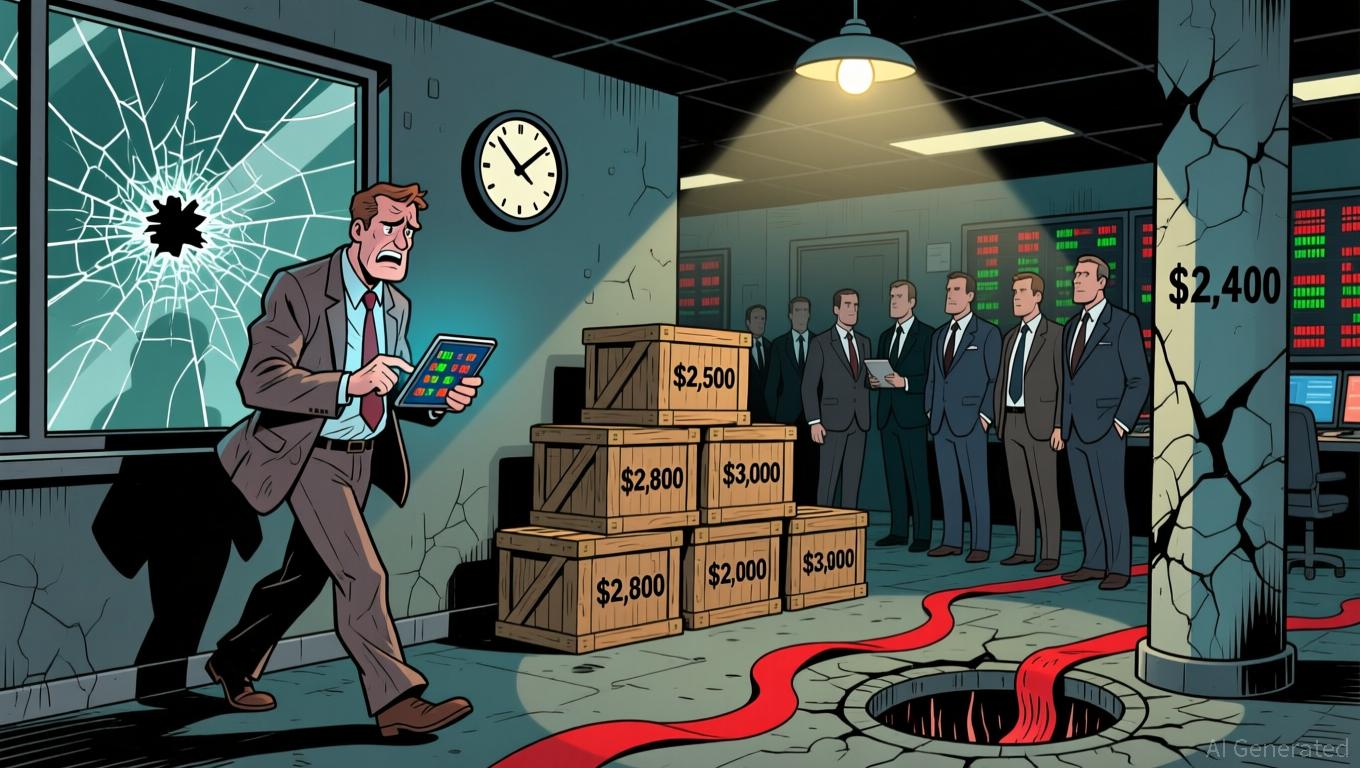KakaoBank Breaks Through Regulatory Barriers to Introduce Stablecoin as South Korea Accelerates Digital Finance Competition
- KakaoBank accelerates development of "Kakao Coin," a Korean won-pegged stablecoin, to lead South Korea's blockchain-driven financial innovation. - Founder Kim Beom-soo leads the project, hiring blockchain experts for infrastructure while navigating regulatory debates over bank ownership requirements. - Naver-Dunamu's $10.3B merger creates a crypto-payment giant, intensifying competition as firms race to secure stablecoin market dominance amid unclear regulations. - Regulatory gridlock between Bank of Kor
KakaoBank, recognized as South Korea’s top digital bank, is ramping up efforts to launch a stablecoin tied to the Korean won, known as "Kakao Coin," as part of its broader strategy to embed blockchain into its financial offerings. After securing necessary internal and regulatory green lights, the company is making a decisive move to lead the nation’s emerging stablecoin sector. The project is reportedly being led by Kakao’s founder, Kim Beom-soo,
This initiative coincides with South Korea’s increasing focus on digital assets,

The competitive landscape has intensified following the Naver-Dunamu merger, completed in November 2025. Naver Financial’s takeover of Dunamu, which operates Upbit—the country’s largest crypto exchange—has formed a powerful entity with robust payment systems and regulatory know-how. The $10.3 billion all-stock transaction, which lowers Naver’s stake to 17%, is projected to
KakaoBank’s approach also involves exploring STOs, working with Korea Investment & Securities and Lucent Block to create blockchain-driven financial solutions. These initiatives are in step with recent legislative changes in South Korea,
Regulatory certainty remains the main barrier. Although lawmakers have put forward several stablecoin proposals, disagreements continue over ownership models, reserve policies, and interest distribution. The BOK’s demand for banks to hold at least 51% ownership in issuers stands in contrast to the FSC’s more inclusive stance,
Disclaimer: The content of this article solely reflects the author's opinion and does not represent the platform in any capacity. This article is not intended to serve as a reference for making investment decisions.
You may also like
Ethereum Updates: Ethereum Drops to $2,800, Prompting Surge in Demand for ZKP's Hardware-Based Presale
- Ethereum's price fell below $2,800, triggering $6.5M liquidations and testing critical support levels amid declining on-chain demand metrics. - Institutional players like BitMine accumulated 3.62M ETH (~$10.4B) despite the selloff, signaling long-term bullish conviction. - ZKP's hardware-driven presale gained traction with $17M in ready-to-ship Proof Pods and Miami Dolphins partnership for privacy-focused sports analytics. - Mutuum Finance's $19M DeFi presale and ZKP's auction model with $50K wallet caps

Vitalik Buterin Supports ZKsync: What This Means for Layer 2 Scaling
- Vitalik Buterin endorsed ZKsync in late 2025, highlighting its "underrated and valuable" work alongside the Atlas upgrade achieving 15,000 TPS and $0.0001 fees. - ZKsync's zero-knowledge rollups and EVM compatibility enabled institutional adoption by Deutsche Bank , Sony , and Goldman Sachs for cross-chain and enterprise use cases. - The Fusaka upgrade aims to double throughput to 30,000 TPS by December 2025, positioning ZKsync to compete with Polygon zkEVM and StarkNet in Ethereum's Layer 2 landscape. -

The ZK Atlas Enhancement: Revolutionizing Blockchain Scalability?
- ZKsync's 2025 Atlas Upgrade achieves 15,000–43,000 TPS with sub-1-second finality, addressing Ethereum L2 scalability bottlenecks via Airbender proofs and modular OS. - DeFi protocols like Aave and Lido leverage ZKsync's $0.0001/tx costs to unify liquidity, while Deutsche Bank and Sony adopt its trustless cross-chain infrastructure for compliance and transparency. - ZK token surged 150% post-upgrade, with TVL hitting $3.3B and analysts projecting 60.7% CAGR for ZK Layer-2 solutions by 2031 amid instituti

XRP News Update: XRP ETFs Spark Optimism—Is $1,115 Within Reach?
- XRP's price surge to $2.20 is driven by ETF launches, with $422M inflows from Franklin Templeton and Grayscale. - Technical indicators suggest a potential $2.50+ rally if support at $1.84 holds, with long-term forecasts reaching $26.50 by 2030. - Institutional adoption of Ripple's ODL and Ripple USD's $1B+ market cap highlight growing utility beyond remittances. - Regulatory clarity post-SEC ruling and macroeconomic factors remain critical for XRP's $1,115 potential in ultra-bullish scenarios.
